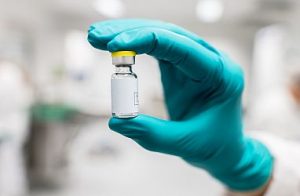How you can get the coronavirus vaccine
Source: The National Academies of Sciences, Engineering and Medicine
December 18, 2020
As COVID-19 cases continue to reach record highs, scientists have been working around the clock to create a vaccine. A breakthrough has finally been made as Pfizer and Moderna, two pharmaceutical companies, have both come out with vaccines with effectiveness rates over 90%.
According to the New York Times, Pfizer worked with German pharmaceutical BioNTech to create a vaccine with a 95% effectiveness rate. Moderna came out with their vaccine not long after with a 94.5% effectiveness rate. These are the two main vaccines, but many pharmaceuticals continue to develop their own vaccines. AstraZeneca recently came out with a vaccine that is more effective for the elderly. Each of these vaccines have been created in a record-breaking amount of time compared to most vaccines, which take years to create.
“The whole world is dealing with the coronavirus,” health and PE teacher Marc Matthie said. “Everybody’s working on [a vaccine]. That might be a reason why it might decrease the timeline [to create a vaccine].”
While the vaccines provide hope for people all over the world, the distribution will not be immediate. Scientists aim for the first vaccines to be delivered sometime before the end of the year, but it is not set in stone.
The National Academies of Sciences, Engineering and Medicine have released a plan for four phases of distribution. Phase One of the plan is to administer the vaccine to first responders, such as health care and nursing home workers. These front line workers will be the first to receive the vaccine.
“It is common sense that essential workers should get it first,” freshman Laura Mineo said. “Essential workers have more exposure [to the virus].”
The vaccine will then be given to the vulnerable, such as the elderly and immunosuppressed. After that is Phase Two, made up of people who work in-person, such as teachers and drivers. Finally, the rest of the population will get the vaccine as part of Phase Three and Four.
“I think as soon as the majority of people get it, [life will] start [to become normal],” Matthie said.
Scientists expect this to be in late April or early June of 2021, but it could still be later. The vaccines still have to finish being approved by the Food and Drug Administration (FDA) and mass produced by their respective companies. Until then, experts like Dr. Anthony Fauci, director of the National Institute of Allergy and Infectious Diseases, recommends people continue wearing masks and social distancing.
“We just get through these next four to five months, then we can get back to our normal routine,” Matthie said.
Once approved by the FDA, the vaccines will be available at most pharmacies and hospitals. The coronavirus vaccine requires two dosages, so people will have to get it once, wait a couple of weeks and then return to the same location for another dose. There are few side effects, such as pain at the injection site and headaches, and a small minority of people have fevers. Even so, these side effects should go away in 24 to 48 hours, and the vaccines are expected to be an effective defense against the coronavirus.
“I don’t know if a vaccine will actually come out before the end of 2020,” Mineo said. “[But] I’m thankful that we will have a vaccine soon.”




